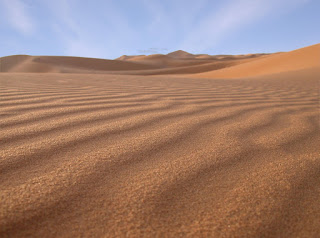Types of Soil
The term soil in soil engineering is defined as an unconsolidated material, composed of solid particles, produced by the disintegration of rocks. The voids space between the particles may contain air, water or both. The soil particles may contain organic matter.
According to the transporting agency, soils are classified as:
-
Water Transported Soil
Flowing water is one of the most important agents in the transportation of soils. Swift running water carries a large quantity of soil either in suspension or by rolling along the bed.
The size of the soil particles carried by water depends upon the velocity. The water will carry large soil particles such as boulders and gravel if the velocity of water is high.
Types of soil deposits come under this classification are:
- Alluvial Deposit: These are deposited by river water
- Lacustrine Deposit: These are deposited by still water like lakes
- Marine Deposit: These are deposited by sea water
-
Wind Transported Soils
Soil particles are transported by winds. The size of the particle that wind carries with it depends upon the velocity of the wind. The finer particles are carried far away from the place of the formation.
Soil deposited by wind is known as Aelolian deposit.
Silt deposited by wind is known as Loess. It has low density and high compressibility. Bearing capacity of this soil is very low and in the vertical direction, the permeability is high.
-
Glacier Deposited Soils
When the snow gets compacted, it forms a large mass of ice known as Glacier and as they grow and move, soil particles of various sizes may get transported from their original position.
The soil deposits made by glaciers directly or indirectly are generally known as Drift.
Deposits directly made by melting of glaciers are called Till.
-
Gravity Deposited Soils
Under the action of gravitational force rock fragments and soil masses can fall from higher elevation and get collected at the foot of the cliffs or steep slopes.
Colluvial soils, such as Talus, have been deposited by the gravity.
Various types of Soils
- Black Cotton Soil: It is a residual soil containing a high percentage of the clay mineral montmotillonite. It has very low bearing capacity and high swelling and shrinkage properties.
- Boulders: They are rock fragments of size more than 300 mm.
- Clay: Clay is a fine-grained soil of size less than 2 microns. It can be made plastic by adjusting the water content and it exhibits considerable strength when dry.
- Cobbles: They are large size particles in the range of 80 mm to 300 mm.
- Dispersive Clays: These are the special type of clay which deflocculates in still water. Such soils erode if exposed to low-velocity water. Susceptibility to dispersion depends upon the cations in the soil pore water.
- Dune Sand: These are wind-transported soils. These are composed of relatively uniform particles of fine to medium sand.
- Expansive Clay: These soils contain the mineral montmorillonite and are prone to large volume change as the water content is changed.
- Gravel: It is a cohesionless material of size ranges from 4.75 mm to 80 mm. It is a type of coarse-grained soil.
- Humus: It is a dark brown, organic amorphous earth of the topsoil. It consists of partly decomposed vegetal matter. It is not suitable for engineering work.
- Laterites: They are residual soils formed in tropical regions. They are very soft when freshly cut and become hard after long exposure. Their hardness is due to the cementing action of Iro Oxide and Aluminium Oxide.
- Loam: It is a mixture os sand, silt and clay.
- Moorum: It is a powdered rock. It consists of small pieces of disintegrated rock or shale with or without boulders.
- Muck: It is a mixture if fine soil particles and highly decomposed organic matter. It is black in colour and of extremely soft consistency. It can not be used for engineering works.
- Peat: It is an organic soil having fibrous aggregates of macroscopic and microscopic particles. It is formed from vegetal mater under conditions of excess moisture such as in swamps.
- Sand: It is cohesionless coarse-grained soil of particle size between 0.075 mm to 4.75 mm.
- Silt: It is a fine-grained soil of particle size between 0.002 mm to 0.075 mm. These particles are not visible from naked eyes. Inorganic silt consists of bulky, equidimensional grains of quartz. It has little or no plasticity and is cohensionless. Organic Silt contains a admixture of organic matter. It is a plastic soil and is cohesive.


No comments:
Post a Comment